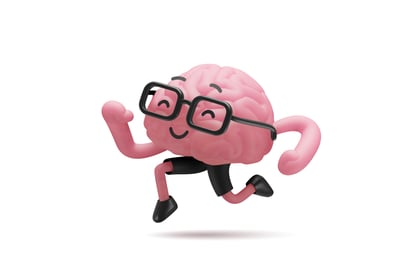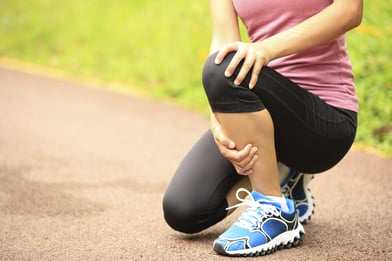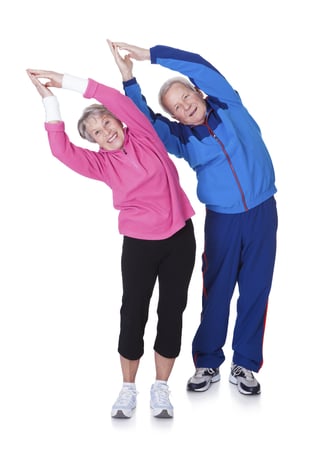 THE BRAIN: the most important organ in our body, is often the most forgotten when we think of training. Why does the brain always seem to slip through the cracks? We can’t stop talking about BMI, body fat percentage, heart rate reserve, and all these other buzz words in the fitness industry. Now you’re probably thinking “but isn’t exercise good for the brain?” and you’d be right but there is more to it than that. We aren’t specifically targeting our brain, we’re focused on our muscles, our heart and the brain is just getting a splash of the love it deserves. That’s something I’d like to change! And we can do that in the gym and at home.
THE BRAIN: the most important organ in our body, is often the most forgotten when we think of training. Why does the brain always seem to slip through the cracks? We can’t stop talking about BMI, body fat percentage, heart rate reserve, and all these other buzz words in the fitness industry. Now you’re probably thinking “but isn’t exercise good for the brain?” and you’d be right but there is more to it than that. We aren’t specifically targeting our brain, we’re focused on our muscles, our heart and the brain is just getting a splash of the love it deserves. That’s something I’d like to change! And we can do that in the gym and at home.
Brain health according to the CDC is the ability to perform all mental processes of cognition, including the ability to learn and judge, use language, and remember. How do we go about preventing cognitive loss?
There are several different factors that go into our brain health such as blood flow, age, learning/engagement, inflammation, and sleep.
- Blood flow is how well our blood moves throughout our body, suppling the different muscles and organ with the necessary nutrients and oxygen, as well as clearing away waste. So, if blood flow is restricted to any area (not just our brain) its bad news for us. Several things restrict blood flow in our body, things like caffeine, nicotine, heart disease, obesity, and hypertension to name a few. Regular exercise (30 minutes a day, 3 times a week) will help knock down a number of these risk factors right off the bat. But there’s still more we can do. We can limit our caffeine and nicotine intake; we can change our diet to include more heart healthy foods. Remember it take diet AND exercise to reach our health goals.
- Our brain diminishes as we age, it grows old just like the rest of our body. We all know things don’t work as well when we get older, but that doesn’t mean we just have to accept it. One simple way to combat cognitive impairment as we age is to take a multi-vitamin. A study over a 3-year period, and including 2000 people, found that a daily multi-vitamin showed measurable improvement in cognitive function compared to those who took the placebo.
- When you stop learning, your brain starts dying. Your brain functions on the same principles of atrophy that any other muscle in your body does “If you don’t use it, you’ll lose it.” You wouldn’t expect your bench to get better if you never work your chest, would you? Well, your brain works the same way, it just needs slightly different exercises. Activities like reading, doing a jigsaw puzzle, playing chess, learning a new language and knitting/crocheting are all examples of hobbies you can do to stimulate your brain and keep it fresh.
- Inflammation anywhere on our body is a pain, it can cause soreness, swelling and a whole host of other problems. But inflammation in our brain can lead to brain shrinkage, and when it comes to our brain, size matters. This inflammation can also lead to brain fog, memory loss, and mental fatigue because it shuts down energy production in our brain cells. One way to prevent inflammation from becoming a problem in the first place is fish oil (or omega-3 fatty acids). Fish oil is proven to help reduce inflammation in the body as well as the brain along with its heart benefits. Foods and spices like turmeric, garlic, ginger, and leafy green vegetables are also known to help reduce inflammation.
- Lastly the one no one gets enough of, sleep. Like any good exercise program, you can’t ignore the recovery. Its important that after a long stimulating day of work, school or just hanging out we give out brains time to rest and recuperate. If we don’t get enough sleep it can lead to declines in our memory and critical thinking skills. It can also put us at a higher risk of mental illnesses, like depression. We need to make sure we get 7 to 8 hours of sleep each night.
Exercise is very beneficial to both our body and our brain. But it is important to remember that it isn’t the end all, be all of brain health. There’s always more we can do by looking at our diet or just trying to read 30 minutes a day instead of watching tv. So, crack open a book or bust out a puzzle and count that as you work out for the day.

.jpg?width=437&height=291&name=GettyImages-482404660%20(1).jpg) Regular physical activity is a major key when comes to living a healthy lifestyle and has many benefits. The biggest benefit is that physical activity helps improve your overall health overtime.
Regular physical activity is a major key when comes to living a healthy lifestyle and has many benefits. The biggest benefit is that physical activity helps improve your overall health overtime.
 During my days as a track athlete, I came to know shins splints a little too well. The constant running and pounding will undoubtedly bring about some discomfort in your lower legs. But I am here to tell you don’t panic! There are ways to fight back against the pain you are feeling and get back to running that doesn’t require you to completely take time off. Follow these tips to understand how to sooth your shins and get back on track!
During my days as a track athlete, I came to know shins splints a little too well. The constant running and pounding will undoubtedly bring about some discomfort in your lower legs. But I am here to tell you don’t panic! There are ways to fight back against the pain you are feeling and get back to running that doesn’t require you to completely take time off. Follow these tips to understand how to sooth your shins and get back on track!


 Circuit workouts are a great way to incorporate many exercises, using cardio, strength, or a combination of the two. Changing up stations throughout the workout will help increase your bouts of cardiovascular activity to increase your heart rate. You can either choose to use time as an interval or a set number of repetitions. Don’t dilly dally and move quickly from one exercise to the next, only resting after each full round is complete. Try for at least two rounds, if not three.
Circuit workouts are a great way to incorporate many exercises, using cardio, strength, or a combination of the two. Changing up stations throughout the workout will help increase your bouts of cardiovascular activity to increase your heart rate. You can either choose to use time as an interval or a set number of repetitions. Don’t dilly dally and move quickly from one exercise to the next, only resting after each full round is complete. Try for at least two rounds, if not three. 
 For the past couple of months, we have been able to enjoy the nice, warm weather, cookouts, vacations, and even those occasional lazy days. While summer is not quite over, this time of year marks getting back to your everyday grind, preparing children to go back to school and hopefully including fitness in both of those plans. Why is it important to include fitness you ask? Well, it is no secret that
For the past couple of months, we have been able to enjoy the nice, warm weather, cookouts, vacations, and even those occasional lazy days. While summer is not quite over, this time of year marks getting back to your everyday grind, preparing children to go back to school and hopefully including fitness in both of those plans. Why is it important to include fitness you ask? Well, it is no secret that  Ten years ago I decided to run my first half marathon. I have never been much of a runner, so I wanted to challenge myself. I went straight to my local department store and bought a new pair of shoes and hit the pavement. After a few weeks, I started to notice some knee pain. It got worse as I went into longer runs and eventually my back started getting the aches as well. When the pain became too much, I went to see my physician. His first reaction was for me to buy new shoes and a pair of inserts. Could this really be the only reason for my excruciating pain?
Ten years ago I decided to run my first half marathon. I have never been much of a runner, so I wanted to challenge myself. I went straight to my local department store and bought a new pair of shoes and hit the pavement. After a few weeks, I started to notice some knee pain. It got worse as I went into longer runs and eventually my back started getting the aches as well. When the pain became too much, I went to see my physician. His first reaction was for me to buy new shoes and a pair of inserts. Could this really be the only reason for my excruciating pain?